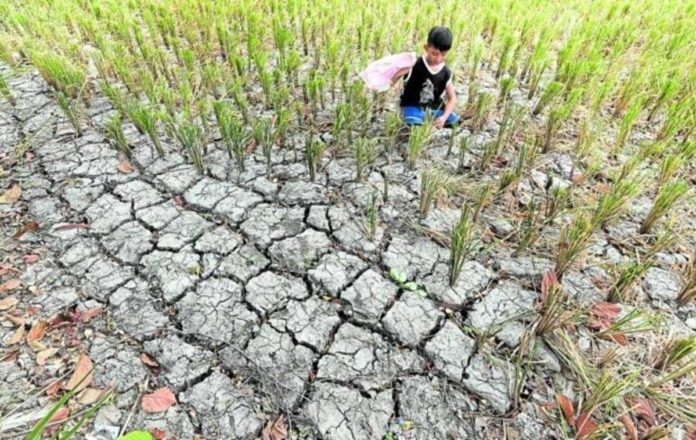
MANILA – The provinces of Batangas, Cavite, and Oriental Mindoro are forecast to experience drought in December due to the El Niño weather phenomenon, the Philippine Atmospheric, Geophysical and Astronomical Services Administration (Pagasa) said on Thursday.
Speaking at the Bagong Pilipinas Ngayon news briefing on state television, Pagasa weather specialist Joey Figuracion said the three provinces have had “below normal” rainfall for the past five months.
“There is lack of rainfall in Batangas, Cavite and Oriental Mindoro and we are connecting it to the effects of the El Niño that is now ongoing,” Figuracion said.
He added that several provinces in four Luzon regions have also been experiencing “dry spell conditions” due to below-normal rainfall in the past three months. These are Benguet, Ifugao, Kalinga, Apayao, Mountain Province, Ilocos Sur, La Union, Pangasinan, Cagayan, Isabela, Nueva Vizcaya, Quirino, Bulacan, Nueva Ecija, Pampanga, Tarlac, Aurora and Palawan.
Citing Pagasa standards, Figuracion said an area is said to be experiencing dry conditions if it receives 41 to 80 percent of normal rainfall for two consecutive months. An area that gets that same rainfall range for three consecutive months, or “way below” the range for two consecutive months, is said to be in a “dry spell condition.”
A drought occurs when rainfall in an area is below normal for five consecutive months or if the area receives 40 percent or less rainfall for two consecutive months, he added.
‘Lower number of typhoons’
The weather specialist said the areas under dry spell and drought will experience “higher than normal” temperatures this month depending on their location and the amount of rainfall they get.
Figuracion said the lower number of typhoons reaching the country is also an effect of El Niño. He said that during the weather phenomenon, typhoons form farther out in the Pacific Ocean and often no longer make landfall or cross over the country.
“If there is a reduction in the number of typhoons, there is also reduction of rainfall in the country. Actually, in the Luzon area during this time of the year, up to 70 percent of rainfall come from typhoons,” he said.
In previous weeks, he noted that rainfall in local areas was brought about by low-pressure areas and shear lines. He said Pagasa projects no typhoons affecting the country in the next two weeks, but for December, the country might experience one or two typhoons.
Figuracion said that the dry period might last until May next year and that there is a possibility that El Niño will still have a “lag effect” until the onset of the rainy season.
Nevertheless, he added that the country will experience “cold surges” due to the intensifying northeast monsoon from December to February. (Jerome Aning © Philippine Daily Inquirer)






